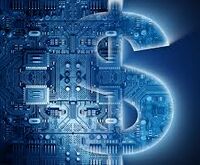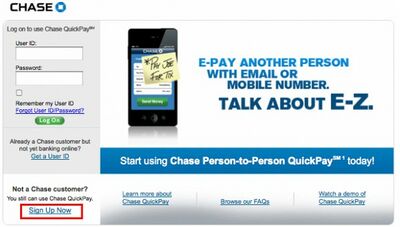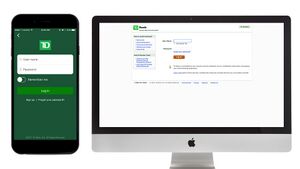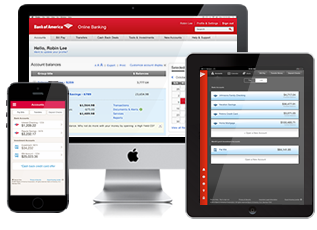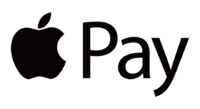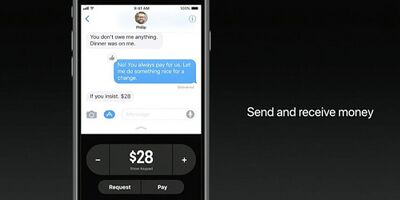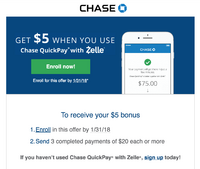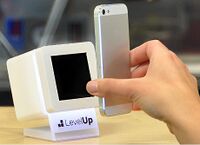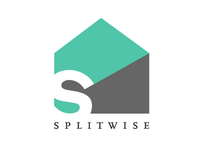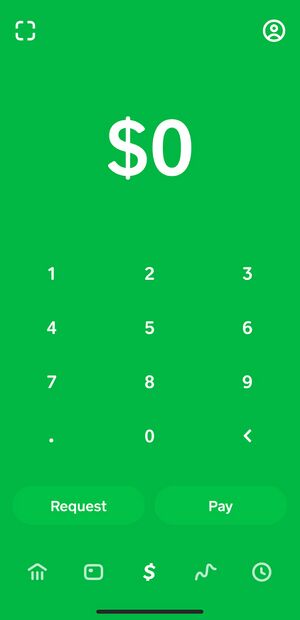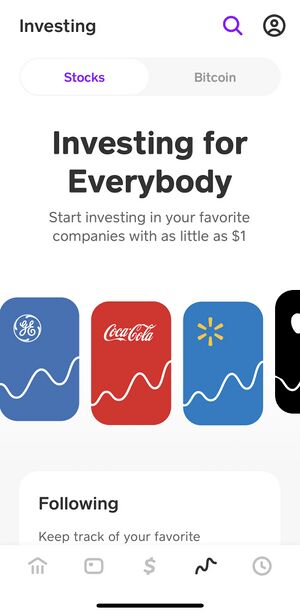Banking
In the modern era, traditional banking systems have transformed into a more interactive online practice. Nowadays, almost everything has become digital. With the developing generation, industries attract new customers through online services and on-the-go ATM technology to enhance the new banking experience. New media provides companies with more business and better results through online express banking. Banking as we know it has been about checking accounts, savings accounts, credit cards, and debit cards. Worthy to mention that this type of banking as known to most is retail banking (banking indeed has many other types: corporate banking, investment banking, commercial banking, merchant banking, etc). Retail banking bodes and works well with examples of how technology has revolutionized the way it is done. Checks are far less in need and use today as digital banking enables newer ways to process payment than cutting a check. This old description of what has been known as "checking account" has effectively and essentially changed to what is today known as "ebanking" denoting the use of electronic banking as a replacement of "checks' as in checking accounts.
[1]
Fintech
Fintech (or financial technology) has grown to become increasingly popular over the past several years. It is an industry that provides innovations for the banking and financial service sectors. The emergence and ascent of Fintech is a reminder of the constant battle between Wall Street and Silicon Valley firms. This stems from the fact that Fintech firms whose job as "disruptors" is essentially to innovate and enhance existing traditional banking products or services. In other words, they compete with traditional banks by offering faster, easier, cheaper means of doing banking than traditional banks themselves. These Fintech firms utilize new media technologies to deliver on their promise to beat traditional banks at their own game. In a Bloomberg interview with the CEO of J.P.Morgan Chase, Jamie Dimon, entitled "Jamie Dimon on Finance: Who Owns the Future?" Mr. Dimon acknowledged that Fintech firms "see an opening" where traditional banks are not satisfying client needs but were quick to add that financial services has long been friendly to new media technology. Going and offering digital services like depositing a check with a smartphone (and skipping a trip to the bank), transferring money between accounts, or other functionalities where technology is used, are already tech-forward.
Some popular Fintech apps are PayPal, Robinhood and Venmo. PayPal has been around for a while, and it serves as a medium to transfer money to your bank account. Robinhood has gained popularity very recently and involves investing in stocks without any commission. This is a good tool to use if you are a college student and want to test the market and don’t want to deal with any of the fees.
Lastly, Venmo is very common and popular that allows one to transfer money straight from a bank account and makes transferring money to other people simple and convenient.
Mobile Banking
Chase QuickPay with Zelle®
Chase QuickPay with Zelle® has revolutionized the bank transfer system. Unlike before, where customers had to come into the branch to perform transfers, they are now able to use their respective banking app to make quick and easy transfers at their convenience. Chase Bank has paved the way for all banks in that aspect by creating Chase QuickPay with Zelle®. The customer must first have the app on their smartphone and enroll in the quickpay service. All the individual needs are either an email address or an active mobile phone number of the recipient. While Chase QuickPay with Zelle® may have been the first of the big banks to use such technology, most of the larger banks in the country have come on board (Citibank, Bank of America, US Bank). The availability of funds has also been hastened by the new technology, as while interbank transfers used to take days to clear, most are now available in minutes.
Chase Quickpay with Zelle® brings convenience to customers worldwide. Instead of paying a bank processing fee for a wire transfer that is only a small amount, between two different banks. One can use quickpay for no additional fee and send money to people with different bank accounts, in minutes. This is super convenient and millions of people use this fantastic feature. Friends that go out for dinner who don't want to use 6 different cards for the bill, usually use one card, and then everyone Quickpays the person that paid for the entire bill.
Chase QuickPay with Zelle® shows a shift in traditional money handling and transferring amongst individuals. With the increased use of social media and new media platforms, we're seeing money being sent to individuals all over the world in the blink of an instant. And while this shortening of funds availability timeline (money in minutes, sometimes quite literally in seconds), as well as offering such money transfer at zero cost, it is still not enough. Some clients have started to ask for higher limits on how much one can transfer. With a single QuickPay capped at $2500 in any given day and $4000 in a 30-day window, clients, certainly bigger clients are requiring banks to up those limits. And the question is not if but when the banks will increase these limits, what is already a huge plus for instant money transfer will become even more so amazing. Banks will have no choice but to oblige to clients' needs. And doing so will yet again add to the customer experience scorecard that these banks are obsessed about. [2] [3]
TD Bank Online Banking
The new TD bank app allows us to manage our TD bank accounts, deposit checks, pay bills, send money through Zelle. With the ease of online banking, we can Bank anytime, anywhere, deposit checks simply by taking a picture, transfer money through Zelle service completely free. When signed up for online banking, TD sends personalized email alerts about balances and login information. Also, TD provides the highest most security enabling its users to log in with Touch ID and single-use security code. [4]
Wireless Application Protocol
The Wireless Application Protocol, better known as WAP, provided the technology that led to the advent of standalone mobile applications. These are the apps that are found on user's smartphones of their respected financial institutions. WAP allows users to indulge in internet banking either on their home computer or smartphone device. It makes accessing internet pages possible because it includes the concepts of browsers, servers, URLs, and gateways. The practice of the WAP system is shown heavily in bank organizations such as CitiBank and Bank of America. Mobile banking is huge in these two organizations. Bank of America uses WAP as its technology platform. Without downloading any software, all cellphones with web access can use the service. The only key step is that customers must be enrolled in online banking by the bank representative to use mobile services. Once they are enrolled in mobile banking, customers can access their checking and savings account, view their credit card balances and redeem rewards points for cash back, pay bills anytime anywhere, make transfers, locate ATMs and nearby branches, as well as get maps and directions to multiple locations. These are all found right on a little application device. [5]
Apple Pay
The synchronization of banking with the digital world is seen through Apple Pay. Apple Pay was formulated by Apple iPhone and it is a digital wallet for tech-savvy users. Cardholders enlist their cards onto their iPhone, tablet, or watch by capturing details of the card in general. Once the cards are captured, they are stored in the digital wallet and so users no longer have to carry a wallet around when they go shopping. Upon conducting a transaction through Apple Pay, stores have digital card readers that receive payment with the tap of the buyer's phone onto a pad. Information is processed as it is taken from the Apple device and moved to the cashier's main screen [7]. Banks love the new Apple Pay technology because it enhances the importance of mobile banking. Apple's mobile payment platform adds more security features, provides intuitive user experience and gives an overall attractive brand name to the process. Also, Apple is working on releasing its other form of payment in competition with Venmo called Apple Pay Cash. Apple Pay Cash is the same concept as Venmo where you can transfer money to another individual that has an iPhone. The interesting feature is that you can send money through iMessage or even by asking Siri to send it to someone.[1]
Apple Pay Cash
With the launch of iOS 11.2, Apple has launched a new feature called the Apple Pay Cash. Although in this marketplace there are numerous applications available to send or receive money, Apple's involvement adds to the general appeal given that all things Apple become well sought after. A user of Apple Pay Cash can send or receive money directly through iMessages which is kind of similar to Venmo or Square Cash. The money that a user receives will live on a digital Apple Pay Cash card in the Wallet app. A user can spend money anywhere where Apple Pay is accepted. This is true for sending money to someone else as well. [2]
Mobile Payment Systems
PayPal
PayPal Holdings Inc. is an online payment system that serves users from around the world. PayPal was founded in 1998. PayPal is listed on the Nasdaq Stock Exchange under ticker symbol PYPL. Paypal allows merchants and users to send and receive digital payments. Paypal allows users to receive money in more than 100 currencies, withdraw money in 56 currencies, as well as hold money in 25 currencies. [8] PayPal enhances banking customers abilities - it is convenient. Instead of having to write checks, users can now use PayPal. The PayPal app can be downloaded on Androids, Apple devices, etc. allowing customers to log into their accounts while on the go. Besides, many merchants allow users to pay for items through Paypal both online as well as in-store. [9]
Alipay
Alipay is a third-party mobile and online payment platform. Alipay exceeds PayPal become the world’s largest mobile payment platform in 2013. In September 2017, Alipay even achieves facial recognition for its payment service, which means money transactions can be more secure and convenient. By using this app, people could easily pay their bills, and transfer their money to others. Moreover, people could use their services in the industries, such as dining and transportation, etc. By using its app, people could purchase by simply scanning the barcode. [10]
Venmo
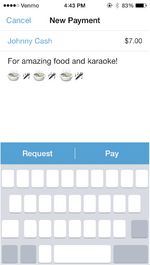
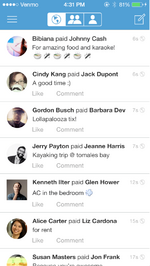
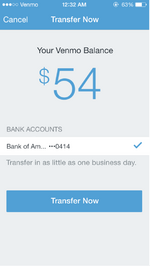
Venmo is a free mobile app that is offered by Paypal Inc. It allows users to make payments to friends and make purchases with certain merchants, you then have the option to share your transaction on the social page of Venmo. Users first have to create an account by linking a bank account. There is no fee when users link debit cards, however, Venmo charges a 3% service fee for linked credit cards. Venmo accounts can be linked to Facebook accounts, and users can add friends on Venmo. Users can may payments as well as charge others. Venmo is useful in that it allows users to split fares or even to say hello. Money that is in a user's Venmo account can be transferred to the user's bank account in as little as one business day. Venmo has security features in place. Users' financial information is encrypted to ensure confidentiality. Users can also change the privacy of their payment to either make it viewable to the public, friends, or participants. [11]
SamsungPay
SamsungPay is similar to Apple pay in the sense that it allows users to pay for transactions using their mobile device. However, the SamsungPay app allows users to pay at merchants that only accept the traditional swipe method of payment due to a technology called MST, Magnetic Secure Transmission, that they acquired when Samsung purchased LoopPay in 2015[3]
Snapcash
Snapcash is a system that is integrated into the app, Snapchat. Snapchat is an app that is used to send pictures or videos between friends and they have added a way to send money from person to person just by simply using the ($) dollar sign. There is an initial $250 limit to spend, weekly, after some time when you spend more than $250, you will be prompted to verify your identity. There are no fees to send money from person to person, and each transaction takes around one to two days for it to appear in your bank account. Snapchat uses Square's software to process the transactions that are made, so therefore, if there are any issues, users should contact square and not Snapchat. To start making payments or receiving payment, one would need to link a debit card. If money is sent to an account without a debit card, the money will not be processed and is then sent back to the sender's bank account in one to two days. Within the app itself, there is also a "transactions and receipts" page that keeps track of all expenditures so the user can track what is happening in their account. [12]
Facebook Payment
Facebook Payment is an online banking system that allows users to send and receive money without any charge through Facebook Messenger. It has the industry's leading security, password protection, anti-fraud team and more to protect individual's privacy. Users can send or request money from their debit card to his or her friends on Facebook freely. Facebook allows anyone using Payment in Messenger to send and receive up to $9,999 within a rolling 30 day period to help protect users from unauthorized payments activity and to comply with various federal and state laws. Also, Facebook Payment is used to pay advertisement bills, which a company or individual advertised through Facebook, the bill has to go through Facebook Payment.[13]
Kakao Pay
Kakao Pay is a simple payment service combining LG CNS MPay with KakaoTalk. As a simple smartphone payment solution of LG CNS, MPay is the only solution that has obtained the top security grade from the Financial Supervisory Service, so it is verified that it is as safe as a digital certificate. LG CNS has partnered with Kakao and embedded its MPay module in KakaoTalk. As a result, anyone who uses KakaoTalk can make a payment in online or mobile shopping malls by just entering his/her password once. Kakao Pay is one of the most convenient and safest payment methods using credit cards. KakaoTalk users can join Kakao Pay through a simple joining procedure without installing a separate app. Subscribers can register all their credit cards with Kakao Pay and can select and use a credit card that can be most beneficial depending on the situation. Kakao Pay guarantees high security by using smartphones in online transaction certification. Sensitive personal information and credit card information are separately stored in smartphones and the server after encryption to prevent information leakage by hackers.[14]
Zelle
The Zelle app lets almost anyone with a U.S. debit card send money to (and receive money from) registered Zelle users who have access to Zelle through participating banks and credit unions. To use this banking service, a user has to download a Zelle App. It works across both iOS and Android devices enabling a more extensive user base across either platform. With just a recipient’s email address or mobile phone number, one can quickly, safely and easily send money to more people, typically within minutes. Unlike Venmo, which allows transfer through credit card but charges a 3% convenience fee, Zelle is completely credit-card-free. If you are using Zelle through a Bank of America account, for example, you can send up to $2500 a day, and $4000 in 30 days as the send limit. In contrast, Venmo allows users to transfer $299.99 weekly with the option to increase the limit, upon verification. The app offers the ability to split payments between multiple users, making it easier to charge friends for a shared meal. This service was started in June 2017. [15]
The company's main differentiation that sets it apart from Venmo and Paypal is its support from financial institutions. There are about 30 huge financial institutions that partner up with Zelle to provide this mobile payment service. Many of these banks are the largest financial firms in the world with J.P.Morgan Chase being the biggest such bank on the platform. With the backing of a consortium of large financial institutions come with the added cost savings and this gets passed on to users in the form of zero transaction cost. This presents a problem for Venmo putting it at a massive competitive disadvantage. This app, with the help of these financial institutions, allow for the instant transfer of payments, not only from one user to another but to the person's bank account immediately, again, at no cost. The Zelle network of financial institutions has handled mobile payments totaling approximately $33 billion, most of which came before the Zelle launch. Zelle hopes to tap into that user base to compete with Venmo in the space. [16]
Google Wallet
Google Wallet is the service offered by Google that simplifies money transfer between the parties using a mobile device or desktop computer with no cost to either sender or receiver. This app enables the user to link up to two debit cards to the profile and use various services such as bill-splitting, money receiving, money sending, etc. After receiving money, it stays on the app balance. A user has two options: either to transfer money to the account through the linked debit card or spend money right from the wallet. It is even more convenient for those who already have a Google profile. The app automatically transfers the contacts from your email contact list and adds them to the Google Wallet contact list. One of the advantages of this app is that a single transaction could go up to $9,999.00 or $10,000.00 every seven days. Security features of the App are also solid, just like other money sending/receiving apps it lets you set up the fingerprint or the PIN authentication. The app has the following disadvantages: for now, you can only link the debit card to the app and cannot set up. the credit card as a payment method. Also, bill-splitting is for iOS users only and is not available for Android.
[17]
LevelUp
LevelUp is a mobile payments platform that combines the convenience of ordering ahead and seamless payment. LevelUp works with restaurants and brands across America to offer a better in-store experience to customers. Users of the mobile application can place an order through any participating restaurant, pay through the app, and their food will be ready for pick-up. For those stores that do not offer orders ahead of time, they can provide a simple payment solution at the register. The integrated platform uses QR code technology to allow for a seamless Point-of-Sale mobile transaction. The application links the customer's debit or credit card to a unique QR code that can be accessed through the app. To pay with LevelUp, users can scan their QR code from their phone to LevelUp scanners at participating LevelUp businesses.
In addition to offering great features for customers, LevelUp offers a wide variety of functionalities within their integrated platform. The platform can offer this payment solution because its Point-of-Sale technology integrates with all major POS systems. Alongside the QR payment technology, LevelUp has partnered up with major mobile payment services such as Chase Pay and Google Wallet to allow for the implementation of LevelUp to further develop a mobile payment ecosystem. LevelUp has also developed an extensive customer engagement platform available to restaurants. It can gather data from in-store transactions and mobile app users to target marketing campaigns to certain customers, leading to increased customer spend.
The platform was founded in 2008 by Seth Priebatsch and launched in 2011. LevelUp recently, in May 2017, raised $50 million in funding led by J.P. Morgan Chase. [18]
Splitwise
Splitwise is an app that makes splitting bills with friends and family very simple and easy. It was founded in 2011 by Jonathan Bittner, Ryan Laughlin, and Marshall Weir. It started as a rent splitting calculator by Jonathan Bittner to determine what was fair in splitting up rent expenses. Now, the app lets users organize any shared expenses on the app and makes every detail visible to everyone. The app splits the costs amongst however many people there are and everyone is aware of what they owe and what it’s for. The app is free and there is no cost of joining.
Users can use it for trip expenses, restaurant bills, rent, and all kinds of expenses. It even calculates tax and tip! Splitwise emphasizes the idea of fairness and believes being fair should be made easier. It allows users to create a group within the app and list all expenses there. For example, you can have different groups such as one for your Ski Trip or Birthday Dinner. You can even pick specific people within a group to split expenses with. Let’s say only 2 people out of the group had drinks. You can add the drink expenses to those two people only instead of adding it to the whole group.
All you have to do is add your bank account information one time. Split wise also sends friendly reminders and has features that set deadlines. The Splitwise app and website also have different “fairness calculators” such as rent calculators, travel calculators, tax calculators, guest calculators.
EMV Chip Card Technology
Chip card technology is the latest innovation in credit and debit card security. EMV, which stands for Europay, Mastercard, and Visa, is a microchip embedded in the bank card that contains sensitive information of clients, protecting them from fraudulent transactions. The EMV design has replaced the old magnetic stripe technology found on all cards. Traditionally, the credit card number was found on the magnetic stripe on the back of the card. So whenever someone swiped the card, checkout terminals would read the card information from that stripe and accordingly move money from the account through a specific network. A credit card number is a static number, meaning that the same number is seen in every transaction. This makes it easier for criminals to hack the terminal and access private card information. The microprocessor chip found in the EMV technology generates a unique code every time the card is used and so there is no real trace back to your card information [19]. EMV has been around for many years but only made its way to popularity in the United States in 2015 when new regulation shifted the liability from Banks to merchants if they were not using the technology[4]. The EMV system is regulated by either Chip and Pin or Chip and Sign. When inserting the card into a reader, a PIN or signature is needed to verify the customer and deem them as the genuine cardholder. [20] The EMV chip card technology has created a sense of security among cardholders and bank customers in general. More protection is added with its tightened encryption methods. Therefore, people are in a better position to handle their day to day banking with confidence. [21]
Social Media and Banking
The digital age is driven by social media. Along with many other aspects of life, social media laid some of its fingerprints on the financial industry. Social media has been the new form of communication for the majority of the world's population. How it transformed the banking model can be seen in a multitude of ways. There are a couple of key features that social media managed to change for the better. By keeping a close tab to these changes, financial institutions and businesses felt that they are gaining a competitive advantage with the inclusion of social media in their business models. [22] By adopting new technology and the principles of social media, key areas have developed overall in the banking industry. Customer service is huge for banks because, through this instant feedback loop, banks can receive customer response that can help strengthen areas they're told they score poorly on hence helping with their overall growth. Social media added a faster, a more real-time approach to ways customers vent their feelings, opinions, and criticisms towards certain products or practices upheld or provided by banks. As a Private Banker for J.P.Morgan Chase, I can attest to the bank's unrelenting prioritization of customer experience. Using an internal metric known in-house as "OSAT" (meaning Overall Satisfaction), every employee is required to be an agent to boost this score. This obsession with customer experience in banking is akin to what is arguably to be the gold standard of customer experience offered at Amazon, Walt Disney or Zappos (the shoe company which was later acquired by Amazon). These companies believe that by putting the customer first and above all else, those customers are "customers of life" who will remain loyal and continue to give repeat business to the company in question. This emphasis on customer experience is therefore vital to their competitive success. As noted in the Journal article entitled "Customer Experience Is the Key Competitive Differentiator in the Digital Age," the digital economy makes for fast-changing customer preferences, choices, and expectations and keeping up is defining which companies succeed or fail. This constantly keeps even the biggest and the most admired companies on their toes. And this tends to be the case and understandably so because, with competition so fierce and rapid-fire pace of innovation of products and services coming to market, companies that listen to their clients will adapt, innovate, and offer what is asked of it. At this level of customer obsession, OSAT seems to be everything and tends to be all that truly matters, at least that's what these companies tend to believe. This becomes so important that as the article puts it "a design-centric organization should be adamantly focused on its customer's needs, rather than just on its internal operational efficiencies" suggesting that externally, a gauge of clients should supersede firm internal metrics. Living off this principle, as customer experience goes up so does their loyalty to a particular bank or company and vice versa. So, other industries use Facebook and Twitter as a channel of retail customer interaction. These channels are made permanent in the bank's retail models and are administered in their Customer Relationship Management (CRM) systems. Social media marketing has become a huge part of a company's marketing strategy in general. So why not add social media marketing in advertising for the latest Chase Credit Card or promote the best rates for loans and mortgages [23]. Social media adds its imprint on marketing strategies for various financial companies. It brings forth a new twist to how advertisements are brought to feed consumer wants and needs. Big time social media platforms such as Facebook and Twitter are used to spread retail info of a certain credit card, that it the best for traveling or that it's great for cash back, etc. Facebook runs ads across its homepage on user profiles to promote recent deals done by Chase Bank in regards to opening the new Chase Freedom credit card. In one specific case, social media and marketing come into the mix. The credit card provider, American Express, links its clients Amex card with the users' Facebook profile and provides deals based on activity such as check-ins and likes [24]. With a global presence for living online, Facebook is used by banks all across the planet, in countless countries as a tool to create efficient products and service processes. DenizBank in Turkey changed its banking model by adding features through Facebook where customers can access their bank accounts, and initiate services like wire transfers and monitor credit card usage. Barclay Bank, which is big in England, created the features and design of their Barclay Ring Mastercard through crowdsourcing on social media. Last but not least, ICICI bank in India introduced Pockets, a mobile app that allowed users to send money, pay bills, recharge mobile phones, etc. and the user was allowed access by providing their Facebook credentials [25]
Facebook and Banking
In May 2018, it was revealed that Facebook is establishing a blockchain division that would run under the supervision of David Marcus, who had earlier overseen the creation of Facebook Messenger. This happened four months after CEO Mark Zuckerberg stated in his new year resolution post that he wanted Facebook to “go deeper and study the positive and negative aspects of” cryptocurrencies.
Then in December 2018, news came out that Facebook is building a cryptocurrency which will make it easy for them to transfer money on WhatsApp. The currency is going to be focussed on India since they have 400 million WhatsApp users. To make sure that the currency is not as volatile as traditional cryptos, this one will be a stable coin.
Finally, in June 2019, Facebook formally announced Libra and released its whitepaper. The coin is set for a 2020 launch. To understand the real power of cryptocurrencies and why Facebook’s initiative could be so game-changing, let’s first understand one of the most significant issues with the world right now. As Business Insider reported back in August 2017, 2 billion people around the globe don’t have a bank account. Here are some more stats about the unbanked population:
More than 20% of unbanked adults receive wages or government transfers in cash, and many people in developing countries pay bills and school fees in cash. Women make up just over half (55%) of unbanked people worldwide. Southeast Asia alone has 438 million unbanked people, which is 73% of the entire population. According to a study done by McKinsey, reaching the unbanked population in this region could increase its economic contribution from $17 billion to $52 billion by 2030. India, which is the target market for Libra right now has 190 million unbanked folks, the second largest in the world after China. [26]
Cashapp
Similar to venmo and paypal, cashapp is a quick and easy way to send money to anybody. I personally think cash is the best app for this use becuase it's the easiest and quickest. You simply create a username in which people can send you money or you can send money from. You can link your checkings account, savings account or a credit card. You can also use bitcoin to make payments or receive them as well. The main screen looks like a number pad and has to options, either request or pay. The cash limits are $7500 per week and $17500 you can send. You can receive unlimited. Only $7500 per week is allowed to be added to your cashapp account and you can only cash out $25000 per week. Cashapp also has a feature that you can invest in stocks as well as buy bitcoin. This is all in one app. My favorite thing about cashapp is that there are no fees and you receive money immediately and when you send money, the other person will receive it instantly as well.
Dangers of Mobile Banking
Many people find it convenient to use the above stated mobile banking app as it makes transactions easier, reliable and faster. However, people must understand that that convenience can sometimes come with risks. The risk of hacking is real and does happen. It is the twin-problem of convenience. With most smartphone users doing virtually storing everything on their phones, the loss of being hacked only goes up since a user has so much more information on the line should they get hacked. The dangers of mobile banking include wireless hacking, also when there is poor service there is less security, if one loses his or her phone, someone else may break into it and that simply presents many more problems [27] Imagine someone hacked your account because of poor security, then you may lose your money but even at risk is your personal information as well which can also be misused. Also, if one stores login information on a stolen mobile device, all of a sudden, there is more to steal. Once this personally identifiable information is stolen and accessed, the perpetrator(s) can use it to hack into your other accounts for which you have also stored on your device. Also, as if that is not enough, hackers can utilize the "forgot password "option and fill out the information that they can often easily find on your social media accounts to access one of your banking apps. Login details can be stolen through unprotected Wifi connections and even hotspots. Then there is also the other problem of phishing emails which tends to mimic a real email sent from one's bank, but in reality, they aren't and they can install viruses on your devices and then hack it. [28] The onus is on banks as they need to be well aware of these real threats. The threats are big, unyielding and can only grow as the Internet use grows. A good reminder of a major hack is that experienced by Chase Bank in recent years. This incident affected some 83 million customer accounts. Information stolen by hackers in this incident made it one of the biggest in the history of the United States. Luckily, card information, social security, and other important stuff wasn't hacked except for addresses, emails, and names. [29] At the end of the day, it is the job of the company and their responsibility is to make sure their technology not only provides great convenience to their clients but that it is also set up to be robust as to be able to withstand various doomsday scenarios. This is easier said than done but it is crucial. Just as crucial as the OSAT score or the customer experience metric. Only then is a bank as reliable as it shoots for. This, however, requires huge technology spending budgets for these banks. Technology departments across banks ought to keep up and preferably should stay ahead of hackers in a bid to safeguard customer information entrusted to them. Aware of reputational damage, loss of customer confidence and trust, banks know of the tasks and responsibilities that come with housing millions of customers on their platform.
References
- ↑ https://globalbankingandfinance.com/wp-content/uploads/2013/08/gbaf-technology.jpg
- ↑ https://www.chase.com/psmhelp/index.jsp?pg_name=shared/help/page/chasenet_qp_work
- ↑ https://techinreallife.com/2012/08/24/sending-receiving-money-chase-quickpay/
- ↑ https://www.td.com/us/en/personal-banking/online-banking/
- ↑ http://money.howstuffworks.com/personal-finance/online-banking/mobile-banking4.htm
- ↑ https://www.bankofamerica.com/student-banking/student-checking-savings-account.go/
- ↑ https://www.apple.com/apple-pay/
- ↑ https://www.paypal.com/us/webapps/mpp/about
- ↑ https://play.google.com/store/apps/details?id=com.paypal.android.p2pmobile
- ↑ https://intl.alipay.com/
- ↑ https://venmo.com/about/product
- ↑ https://support.snapchat.com/en-US/article/snapcash-send
- ↑ https://www.facebook.com/help/414383411931263
- ↑ https://www.lgcns.com/Views/Solution/KakaoPay_En
- ↑ https://www.zellepay.com/?utm_source=google&utm_medium=cpc&utm_campaign=862090716&utm_term=zelle
- ↑ https://techcrunch.com/2017/09/08/zelle-the-u-s-banks-venmo-rival-will-launch-its-mobile-app-on-monday/
- ↑ https://www.pcworld.com/article/3232364/apps/google-wallet-review
- ↑ https://www.crunchbase.com/organization/levelup
- ↑ http://gizmodo.com/the-gizmodo-guide-to-the-new-emv-chip-credit-card-payme-1734011799/
- ↑ https://www.level2kernel.com/emv-guide.html/
- ↑ https://www.daveramsey.com/blog/chip-debit-cards-what-you-need-to-know/
- ↑ https://letstalkpayments.com/banks-that-have-implemented-social-media-payments-through-facebook-and-twitter-2/
- ↑ https://http://www.huffingtonpost.com/richard-eldridge/how-social-media-is-shapi_b_9043918.html/
- ↑ https://http://www.huffingtonpost.com/richard-eldridge/how-social-media-is-shapi_b_9043918.html/
- ↑ https://http://www.huffingtonpost.com/richard-eldridge/how-social-media-is-shapi_b_9043918.html/
- ↑ https://blockgeeks.com/guides/understanding-facebooks-cryptocurrency-libra/
- ↑ http://www.wisebread.com/5-dangers-of-mobile-banking-and-how-to-avoid-them
- ↑ https://www.comparitech.com/blog/information-security/what-are-the-risks-of-mobile-banking/
- ↑ http://lifehacker.com/chase-bank-hacked-info-stolen-for-83-million-accounts-1642063956


